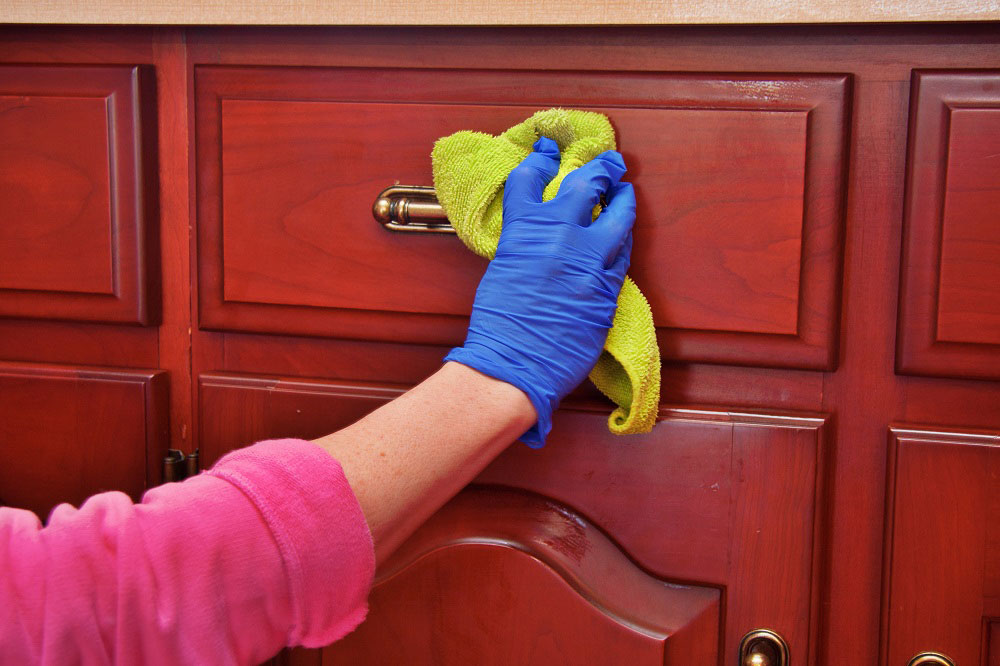Understanding the Cause of Stickiness: How Do I Clean Sticky Kitchen Cabinets

So, you’ve got sticky kitchen cabinets, eh? It’s a right pain, innit? But before you start scrubbing away, it’s important to figure out what’s causing the stickiness. Knowing the cause helps you choose the right cleaning method and prevents the problem from happening again.
Common Culprits Behind Sticky Kitchen Cabinets, How do i clean sticky kitchen cabinets
Sticky kitchen cabinets are usually caused by spills, grease buildup, or residue from cleaning products. Spills, like sugary drinks or sauces, can leave a sticky film on the cabinet surface. Grease from cooking can also build up over time, creating a sticky mess. Even some cleaning products, like those containing silicone, can leave a sticky residue.
Examples of Sticky Substances
Here are some common sticky substances you might find on your kitchen cabinets:
- Sugar-based spills, like juice or syrup
- Greasy substances, like cooking oil or butter
- Sticky sauces, like ketchup or BBQ sauce
- Cleaning product residue, like silicone-based cleaners
How Different Materials React to Stickiness
The material of your kitchen cabinets can also affect how they react to stickiness.
- Wood: Wood is porous and can easily absorb sticky substances. This can make it difficult to clean and can also cause the wood to become discoloured.
- Laminate: Laminate is a non-porous surface, so it’s less likely to absorb sticky substances. However, it can still be difficult to clean if the stickiness is embedded in the surface.
- Painted surfaces: Painted surfaces can be more susceptible to stickiness, especially if the paint is not properly sealed.
Advanced Cleaning Techniques

So, you’ve tackled the basics, but those sticky cabinets are still giving you the ick? Don’t worry, mate, we’ve got some more hardcore cleaning techniques up our sleeve to get those cabinets sparkling.
Advanced Cleaning Techniques
| Cleaning Method | Ingredients | Steps | Tips |
|---|---|---|---|
| Magic Eraser | Magic Eraser (dampened) | 1. Dampen the Magic Eraser with water. 2. Gently rub the sticky areas. 3. Rinse the Magic Eraser and repeat if necessary. |
Use with caution on delicate surfaces. Magic Erasers are abrasive, so they might scratch some finishes. Always test on an inconspicuous area first. |
| Rubbing Alcohol | Rubbing alcohol (70% isopropyl alcohol) | 1. Spray the sticky areas with rubbing alcohol. 2. Let it sit for a few minutes. 3. Wipe clean with a damp cloth. |
Rubbing alcohol can be harsh on some surfaces. Test it on an inconspicuous area first. Use good ventilation when working with rubbing alcohol. |
| Commercial Degreaser | Commercial degreaser (follow product instructions) | 1. Apply the degreaser to the sticky areas. 2. Let it sit for the time specified on the product instructions. 3. Wipe clean with a damp cloth. |
Choose a degreaser that is safe for your cabinet material. Always wear gloves and use good ventilation when working with degreasers. |
How do i clean sticky kitchen cabinets – Tackling sticky kitchen cabinets can be a real pain, but there’s a trick that can make the job a lot easier: lift up the cabinet door! You can get a much better angle to scrub away grime when you have the door raised, and it’s even easier to reach those hard-to-get corners.
If you’re thinking about a kitchen remodel, consider installing lift up cabinet doors for both their stylish appeal and practical cleaning benefits. Once you’ve tackled the sticky mess, your kitchen cabinets will be gleaming and ready for a fresh start!
Tackling sticky kitchen cabinets can feel like an endless battle, but don’t despair! A little elbow grease and the right cleaning solutions can make a world of difference. And while you’re freshening up your kitchen, why not consider a design upgrade?
Cane inserts for cabinet doors add a touch of vintage charm and can even help to disguise minor imperfections. After all, a clean and stylish kitchen is a joy to work in!
